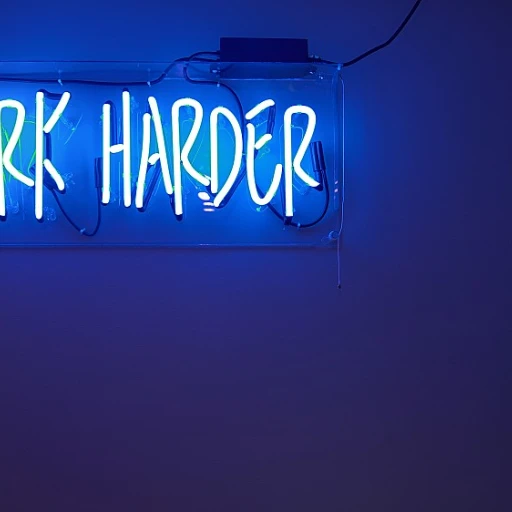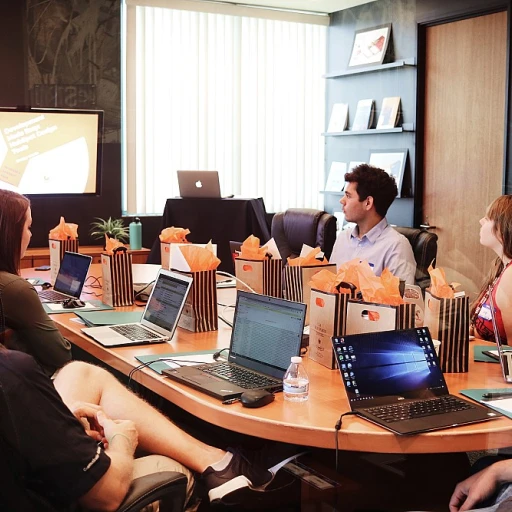
Understanding Diverse Working Styles
Recognizing the Spectrum of Work Styles
In today's dynamic work environment, understanding diverse working styles is crucial for Chief Human Resources Officers (CHROs). Each team member brings a unique approach to tasks, influenced by their individual work style. Some employees are detail oriented, focusing on precision and accuracy, while others are idea oriented, thriving on creativity and innovation. Recognizing these differences allows CHROs to foster a supportive work environment where all team members can excel.
Work styles can be broadly categorized into several types, such as logical work, where individuals rely on data and analysis, and supportive working, which emphasizes collaboration and team cohesion. By identifying these styles, CHROs can tailor their strategies to enhance team productivity and satisfaction.
Adapting to Individual Needs
Adapting to diverse working styles involves more than just recognition. It requires a proactive approach to accommodate the varying needs of employees. For instance, some team members may prefer proximity work, thriving in environments where they can collaborate closely with others. Others might excel in a more independent setting, where they can focus on their tasks without interruption.
Understanding these preferences helps CHROs create a balanced work environment that supports both oriented individuals and those who prefer a more flexible approach. This adaptability is not only beneficial for employee morale but also enhances overall team performance.
Identifying Potential Weaknesses and Areas for Improvement
While recognizing strengths is important, identifying potential weaknesses in working styles is equally crucial. Some employees may struggle with certain tasks due to their preferred work style. For example, a detail oriented individual might find it challenging to adapt to rapid changes in a project, while an idea oriented team member might overlook important details.
By understanding these potential weaknesses, CHROs can implement targeted strategies to support their team members. This might involve providing additional training or resources to help employees improve in specific areas. Ultimately, this comprehensive understanding of diverse working styles enables CHROs to create a harmonious and productive work environment.
For more insights on mastering workforce diversity, explore essential skills for Chief Human Resources Officers.
Communication Skills for Effective Leadership
Mastering Diverse Communication
Effective communication is an indispensable skill for any Chief Human Resources Officer, especially when it comes to adapting to diverse working styles within an organization. Understanding the different communication styles is key to ensuring that every team member feels heard and respected, fostering a supportive work environment conducive to collaboration and productivity.
In today’s diverse workplaces, employees come with various communication preferences. Some individuals are detail oriented, appreciating in-depth and logical work conversations, while others might be more idea oriented, thriving in brainstorm sessions where creativity takes the lead. As a CHRO, acknowledging these differences in work styles and adjusting your communication approach accordingly can greatly enhance team dynamics and overall job satisfaction.
A successful CHRO must also be adept at facilitating communication across departments, acting as a bridge between management and employees. This involves not only conveying messages effectively but also actively listening to team members and offering proximity work to understand their unique perspectives and potential weaknesses. With a supportive working approach, CHROs can guide their teams in expressing ideas clearly and confidently, fostering an environment where employees can articulate their thoughts without fear of judgment.
To leverage these skills and improve areas that might be lacking, CHROs can benefit from resources and professional networks that focus on enhancing leadership capabilities. For instance, interesting perspectives on communication in HR leadership can be explored here, framing how leaders can better support their teams in a rapidly evolving workplace.
Emotional Intelligence in HR Leadership
Embracing Emotional Intelligence for Enhanced Leadership
In the realm of Human Resources, emotional intelligence is a pivotal skill for CHROs navigating diverse working styles. Understanding how individuals operate involves recognizing the emotional undercurrents that drive different work styles and responses to tasks. Emotions influence how team members engage with their work and interact with others, making emotional intelligence crucial for fostering a supportive environment.
Emotional intelligence includes the ability to assess and regulate your own emotions while identifying and empathizing with others' feelings. This empathy is vital when managing a team composed of both logical work-oriented individuals and those who thrive in more idea-oriented settings. Recognizing potential weaknesses and strengths in these varied work styles allows for a more balanced approach to leadership and task delegation.
A CHRO with high emotional intelligence can deftly navigate conflicts, promoting an environment where open communication thrives, and collaboration flourishes. This approach is essential in work environments aiming for inclusivity and collective success. For more insights on engaging team activities that bolster collaboration, consider visiting our detailed resource.
Conflict Resolution and Negotiation
Effective Dispute Resolution and Building Trust
Understanding different working styles and adapting to them is crucial, but it's equally important to address conflicts that may arise due to these differences. Conflict resolution and negotiation are essential skills for a Chief Human Resources Officer (CHRO), as they play a pivotal role in maintaining a harmonious work environment. Conflicts typically stem from misunderstandings, contrasting work styles, or differences in idea-oriented approaches. As a CHRO, it's vital to adopt a supportive work approach, empathizing with team members and promoting effective communication. This fosters an environment where employees feel heard and valued. Here are key strategies to manage conflicts effectively:- Active Listening: Encourage team members to express their concerns while attentively listening without interruption. This helps identify the root cause of disputes.
- Collaborative Problem Solving: Promote a logical work approach by involving all affected team members in brainstorming solutions. Such collaboration not only resolves the current conflict but also fortifies team cohesion.
- Mediation: When individuals struggle to find common ground, a CHRO must step in as a mediator. Neutral facilitation ensures every perspective is considered, paving the way for a mutually beneficial resolution.
- Setting Clear Expectations: Clarify the goals and expectations for each project or task. This avoids potential misunderstandings that can escalate into conflicts among detail-oriented and idea-oriented individuals.
Strategic Thinking and Adaptability
Strategic Adaptability to Diverse Work Styles
Adaptability is a core skill for any Chief Human Resources Officer. With various working styles present in today's work environment, it’s essential to approach challenges with a flexible, yet structured thinking process. This involves understanding the potential weaknesses in current strategies, while continuously seeking areas for improvement.
A great CHRO should be able to switch between supportive and logical work approaches depending on the situation. For example, managing a project with oriented individuals who prefer detail oriented tasks requires a different strategy than working with a team idea oriented towards creative solutions.
Tailoring Strategy for Team Dynamics
Successfully leading a diverse team requires the ability to analyze and respond to varying work and communication styles. Recognizing that some team members thrive in a supportive work environment while others excel in an oriented work setting enables CHROs to tailor their leadership tactics effectively.
CHROs need to align the organization's goals with the different working styles of their team. Whether engaging in proximity work or managing remote teams, strategic thinking is crucial for fostering collaboration and achieving the desired outcomes.
Ultimately, the best strategies are those that not only lead to meeting organizational objectives but also empower team members. Leveraging their strengths and supporting each individual contributes to a more harmonious and productive work environment.
Fostering an Inclusive Work Environment
Creating an Inclusive Work Culture
In the realm of human resources, fostering an inclusive work environment is pivotal. This not only enhances team cohesion but also taps into the diverse strengths of employees with varying work styles. An inclusive environment encourages communication among team members, ranging from detail-oriented to idea-oriented individuals, and bridges gaps in understanding working styles. By embracing diversity, a supportive environment is forged where employees feel valued and understood, contributing positively to the organization’s overall success.
One essential strategy in creating such an environment is to promote collaboration over competition. This approach encourages team members to share their unique insights and skills, which can lead to innovative solutions and improved problem solving. Leaders should focus on building trust and creating spaces where communication is free-flowing and respectful. When team members feel comfortable sharing their thoughts without fear of judgment, new ideas and logical solutions can flourish.
Inclusion also involves recognizing potential weaknesses in the workplace and addressing them proactively. Whether these are related to specific work styles or broader organizational practices, identifying areas for improvement can prevent misunderstandings and conflicts. Fostering proximity work with regular team check-ins can keep everyone aligned, oriented, and more supportive of each other’s roles and tasks.
Ultimately, the chief human resources officer plays a critical role in ensuring all individuals feel they belong, are respected, and can contribute to the organization's mission. By doing this, they not only enhance employee satisfaction but also pave the way for a more dynamic and effective team.













